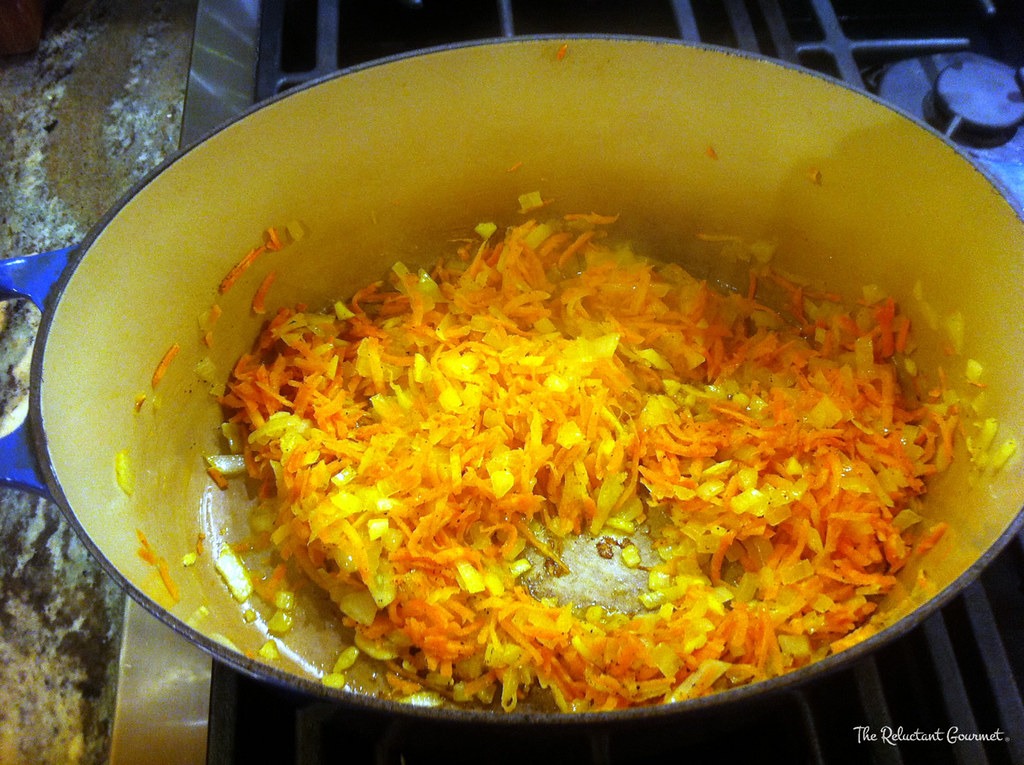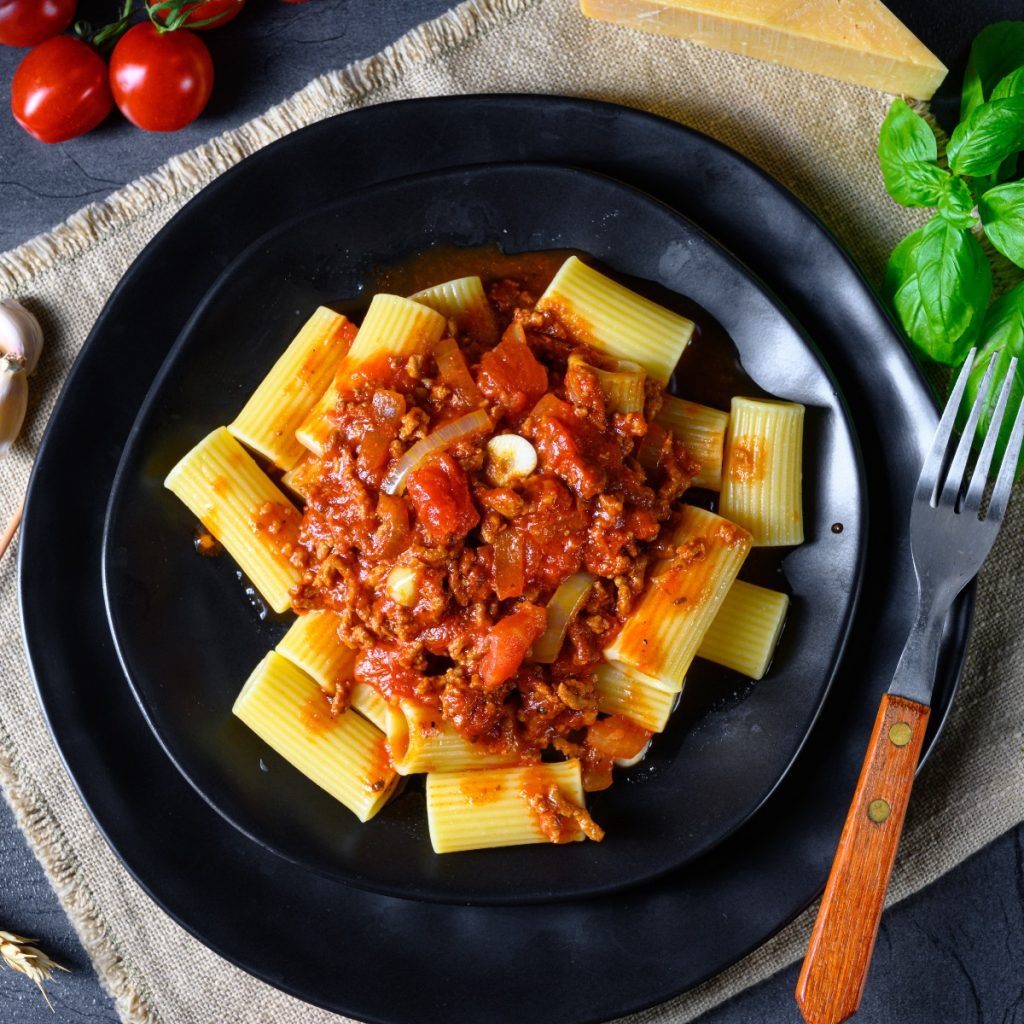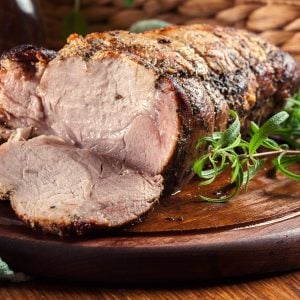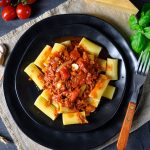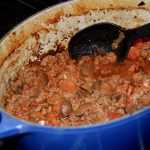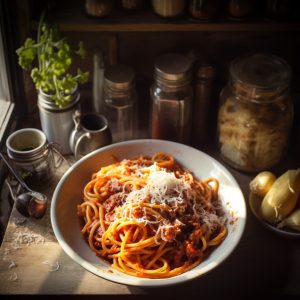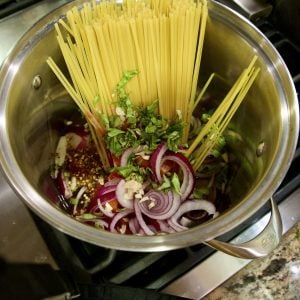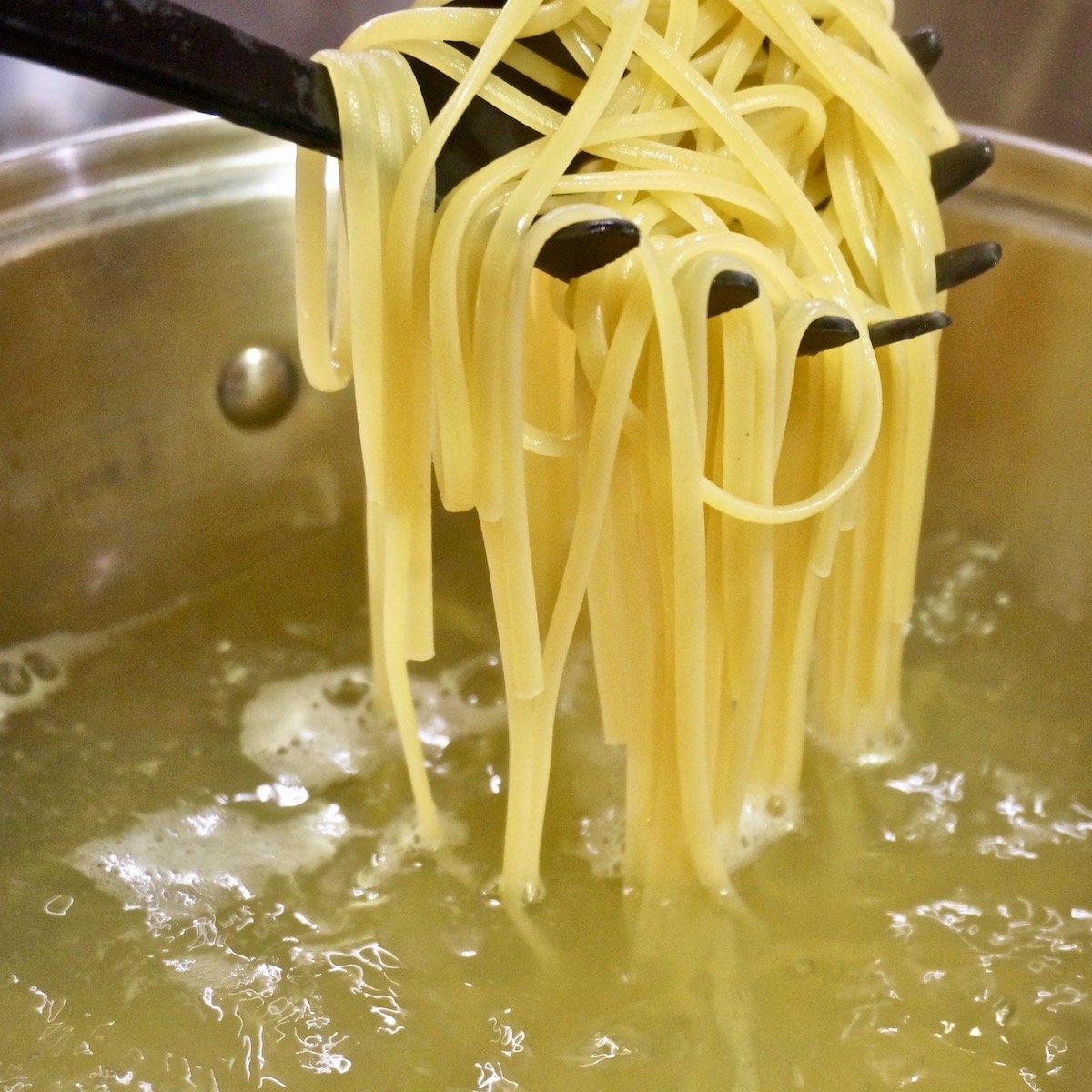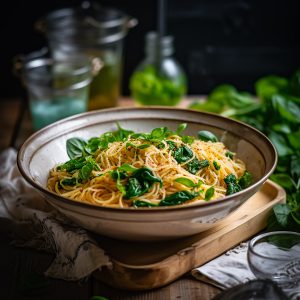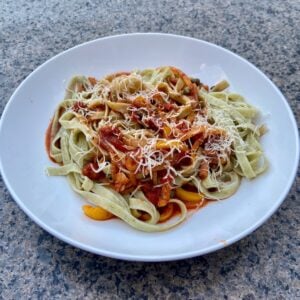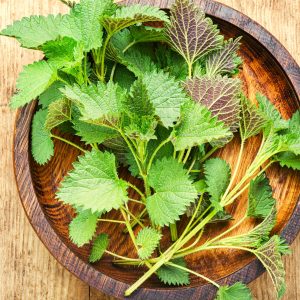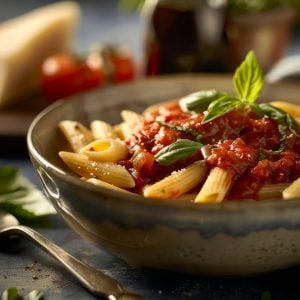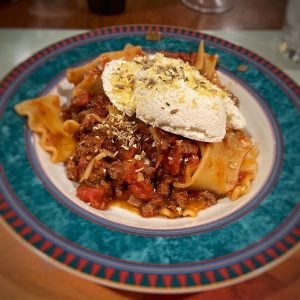How to Make Traditional Bolognese Sauce at Home (Step-by-Step Guide)
Bolognese sauce is a rich, slow-cooked meat sauce that brings comfort and depth to any pasta dish. Rooted in the culinary traditions of Bologna, Italy, this classic sauce goes far beyond a simple meat and tomato combination.
It begins with a flavorful soffritto of onion, carrot, and celery sautéed in olive oil or butter. From there, ground meat—often a blend of beef and pork—browns and simmers slowly with wine, milk, and a hint of tomato, building layers of complex flavor.
This post walks you through the step-by-step process of making an authentic Bolognese sauce at home. You’ll learn the importance of gentle heat, long cooking times, and quality ingredients in developing the sauce’s signature richness and velvety texture.
Whether you’re serving it over tagliatelle, layering it into lasagna, or freezing a batch for future meals, this Bolognese delivers deep, savory satisfaction every time.
If you’ve only experienced quick “meat sauce,” prepare to discover something far more indulgent and rewarding. Homemade Bolognese is worth every minute of its slow transformation.
Every chef has had their own variation of how Bolognese should be made for a long time. I’ve seen variations using different types of meats, numerous meat ratios, and different herbs and spices. Let’s dive in and bring this Italian classic to life in your kitchen—one simmering, savory spoonful at a time.
My Favorite Bolognese Sauce
Ingredients
- ½ cup olive oil
- 1 large onion chopped fine
- 4 carrots shredded
- 3 cloves garlic minced
- 2½ pounds ground meat beef, veal & pork mixture
- 6 ounces tomato paste
- ½ cup red wine
- 2 tablespoons Worcestershire sauce
- 43½ ounces diced tomatoes 3 - 14½ ounce cans
- 1 cup milk
- 1 tablespoon fresh thyme finely minced
- 1 tablespoon fresh sage finely minced
- 2 tablespoons fresh parsley finely minced
- 2 tablespoons fresh basil finely minced
- salt & pepper to taste
- Parmesan cheese freshly grated
Instructions
- Heat a large fry pan or Dutch oven over medium heat.
- Add the oil, and add the onions, carrots, and garlic when hot. Sauté until the onions soften up, about 5 minutes.
- Push the onion, carrots, and garlic to the sides of the pot and add the ground meat and cook until brown. Mix the browned meat with the other ingredients by stirring them all together with a wooden spoon. Does it have to be wooden? No, but I like cooking with wooden utensils
- Again, push the meat and carrots to the sides of the pot and add the tomato paste. It should soften up a little with the heat of the pan and then you can combine it with the rest of the ingredients.
- Add the wine and Worcestershire sauce and stir to combine with everything else.
- Add the diced tomatoes, stir, then the milk, stir, then the finely minced herbs, and stir to combine.
- Season with salt and pepper, lower the heat, and simmer for at least one hour but two would be better. I wasn’t sure if it would cook better with or without the lid on my Dutch oven, so I partially covered it and it turned out fine.
- Serve over some penne or pappardelle pasta with some freshly grated Parmesan cheese over the top.
Notes
The authentic bolognese sauce recipe registered with the Bologna Chamber of Commerce
Here it is if you want the authentic Bologna Chamber of Commerce recipe.
Bologna Chamber of Commerce Authentic Bolognese Recipe
Ingredients
- 350 grams beef
- 150 grams pancetta or bacon
- 50 grams carrot
- 50 grams celery
- 50 grams onion
- 70 grams tomato paste
- 1 cup beef broth or bouillon
- 1 cup whole milk
- ½ cup dry white wine
- salt and pepper
- olive oil extra virgin
Instructions
- First, finely chop the onion, carrot, and celery. Cut the beef and pancetta into small pieces.
- Heat a large, heavy-bottomed saucepan over medium heat, and add olive oil. Add the onion, carrot, and celery and cook until the onion is translucent.
- Add the beef and pancetta, and cook until browned, stirring occasionally.
- Add the tomato paste and cook for a few minutes.
- Pour the white wine into the saucepan, and let it simmer until it has evaporated.
- Add the beef broth and milk, and bring to a simmer. Reduce heat to low and let it cook for at least 2 hours, stirring occasionally. If the sauce starts to dry out, add some more broth or milk.
- Season with salt and black pepper to taste.
- Serve the Bolognese sauce with freshly made tagliatelle pasta and garnish with Parmigiano-Reggiano cheese.
Notes
What Is the Best Pasta to Serve This Sauce With?
| Pasta | Description | Why It Pairs Well |
|---|---|---|
| Tagliatelle | Long, flat ribbons of egg pasta traditional to Emilia-Romagna. | Its broad surface and porous texture hold the hearty sauce beautifully. |
| Pappardelle | Wide, thick ribbons of pasta, even broader than tagliatelle. | Handles the weight of Bolognese with ease, offering a luxurious bite. |
| Fettuccine | Slightly narrower than tagliatelle, flat egg noodles. | Catches meat and sauce in every forkful while providing a satisfying chew. |
| Lasagna Sheets | Flat, wide sheets used in layered baked dishes. | Ideal for layering with Bolognese and béchamel in classic lasagna alla Bolognese. |
| Rigatoni | Large, ridged tubes with a wide opening. | Tubes fill with sauce while ridges trap meat, offering bursts of flavor. |
| Paccheri | Oversized, smooth tubes popular in Southern Italy. | Their cavernous shape holds thick sauce portions well, ideal for hearty ragù. |
| Penne | Short, angled tubes that can be smooth or ridged (penne lisce or rigate). | Their shape captures chunks of meat inside, and ridges grip the sauce effectively. |
| Trofie | Short, twisted pasta from Liguria. | Surprisingly effective at catching meat in its twists for a rustic feel. |
| Garganelli | Tubular pasta with ridges, shaped by rolling flat squares around a rod. | Mimics a hand-rolled penne; the ridges and tube both hold Bolognese beautifully. |
| Mafaldine | Long ribbons with ruffled edges, resembling miniature lasagna noodles. | The frilly edges help grip the sauce while adding a playful, elegant texture. |
| Bucatini | Long, thick spaghetti-like pasta with a hole through the center. | Holds sauce inside and out; a twist on the usual spaghetti presentation. |
What are the ingredients in a classic bolognese sauce?
- Ground beef or a mixture of beef and pork
- Onion
- Carrot
- Celery
- Garlic
- Tomato paste or canned tomatoes
- Red or white wine
- Milk or cream
- Salt and pepper
- Olive oil or butter
Some recipes may also call for additional ingredients such as bay leaves, nutmeg, or chicken liver.
The vegetables in Bolognese sauce are usually finely chopped and cooked until they are soft and aromatic, which helps to create a rich flavor base for the sauce. The meat is then added and cooked until it is browned, and the tomato paste or canned tomatoes, wine, and milk are added to create a thick and hearty sauce.
Finally, the sauce is typically simmered for several hours to allow the flavors to meld together and create a rich, meaty taste.
How do you prevent the sauce from tasting dry?
- First, you should use enough liquid: Make sure to use enough liquid in the sauce to prevent it from becoming dry. This can include using canned tomatoes, tomato sauce, red or white wine, milk, or broth.
- Cook the sauce low and slow: Bolognese sauce should be cooked over low heat for several hours to allow the flavors to meld together and create a rich, meaty taste. Keep the sauce covered while simmering to prevent it from drying out.
- Add moisture during cooking: Add a splash of water or broth to the sauce if it looks dry.
- Don’t overcook the meat: Overcooking the ground meat can cause it to become dry and tough. Instead, cook the meat until it is browned but still tender.
- Add a splash of cream or butter: Adding a splash of cream or a pat of butter to the sauce towards the end of cooking can add richness and moisture to the dish.
- Stir in some reserved pasta water: Reserve some pasta cooking water before draining it and stir it into the sauce to help bind it to the pasta and prevent it from drying out.
Ground Veal or Lamb?
Italians sometimes use ground veal or ground beef in Bolognese Sauce. While the classic recipe calls for a mixture of ground pork and beef, variations may also include other types of meat.
Some traditional recipes from the Bologna region of Italy may call for ground veal or beef instead of ground pork. It depends on personal preference and regional variations. Ultimately, the important thing is to use quality meat that is well browned and cooked slowly in the sauce to develop the rich, meaty flavor characteristic of Bolognese Sauce.
While ground lamb is not a traditional ingredient in Bolognese Sauce, it can be used as a substitute or variation to the classic recipe. Lamb has a unique flavor and can add a delicious twist to the sauce.
However, lamb has a more robust flavor than beef or pork, so you may want to adjust the other ingredients in the recipe accordingly to balance out the flavors. For example, you could use less garlic or add more tomatoes to the sauce to mellow out the lamb flavor. Ultimately, it comes down to personal taste and experimentation.
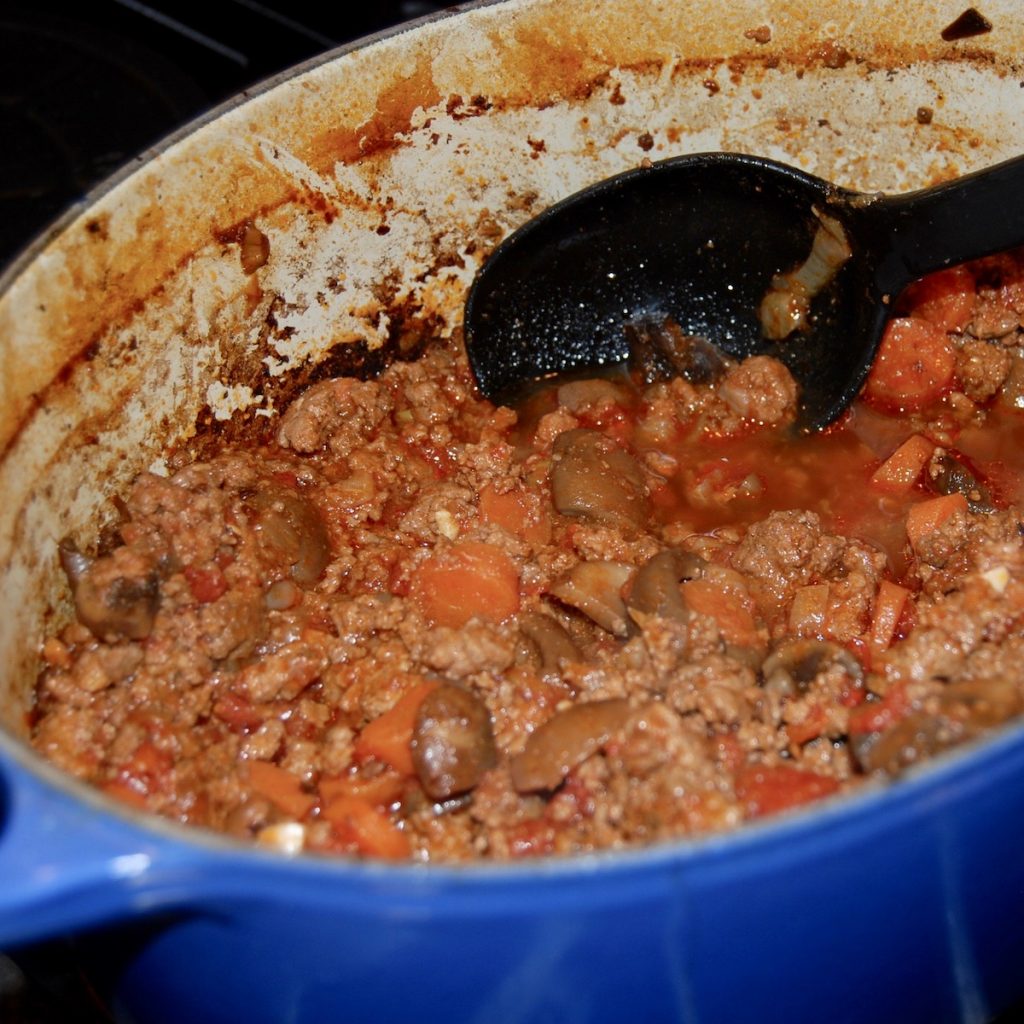
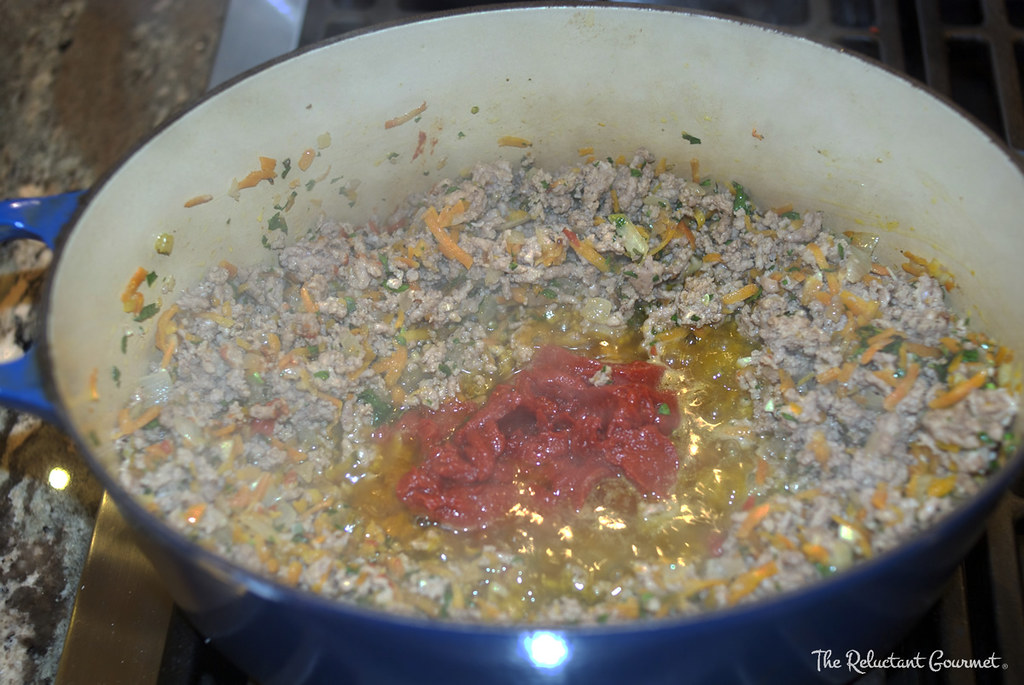
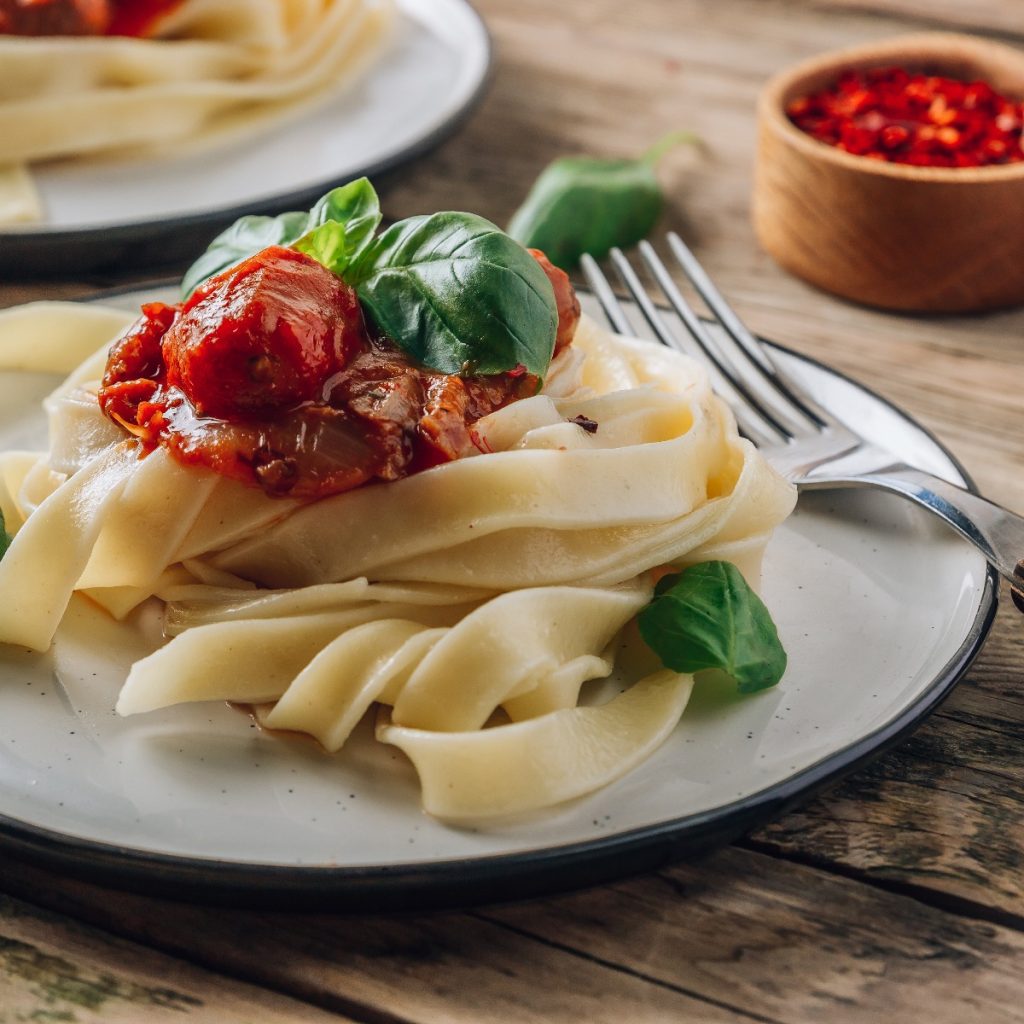
History of This Amazing Sauce
Bolognese sauce, also known as ragù alla Bolognese, is a meat-based sauce that originated in Bologna, Italy. The sauce is typically made with ground beef or pork, vegetables, tomato sauce, wine, and milk or cream and is often served with tagliatelle pasta.
The origins of Bolognese sauce are unclear, but it is generally believed to have originated in the early 19th century. One theory suggests that the chefs of wealthy Bolognese families developed the sauce to stretch their meat supply. In contrast, another theory suggests that local taverns created it as a hearty meal for the working class.
Regardless of its origins, Bolognese sauce became a popular dish in Bologna and beyond, and it was eventually recognized as a traditional Italian recipe. In 1982, the Accademia Italiana della Cucina, a culinary academy based in Italy, published an official recipe for ragù alla Bolognese, which called for specific ingredients and cooking methods.
Today, Bolognese sauce is a popular dish worldwide, and the recipe has many variations. For example, some people prefer to use different types of meat, such as veal or pancetta, while others add other vegetables or spices. However, Bolognese sauce remains a beloved and comforting classic in Italian cuisine, regardless of the specific recipe.
Five Fun Facts
- First, bolognese sauce is not typically served with spaghetti in Italy. Instead, it is usually paired with thicker pasta such as tagliatelle, pappardelle, or fettuccine.
- Authentic Bolognese sauce is registered with the Bologna Chamber of Commerce as a protected recipe. It must be made with specific ingredients and prepared in a certain way to be considered an authentic Bolognese sauce.
- Bolognese sauce is known as ragù alla bolognese in Italian. The word ragù comes from the French term ragout, which means a meat-based stew.
- The first written recipe for a meat-based sauce similar to Bolognese sauce dates back to the late 18th century, but in the early 20th century, the recipe became widely known outside of Italy.
- Bolognese sauce is not just a pasta sauce! It can also be used in other dishes, such as lasagna and meatballs, or even as a topping for pizza.
Varieties
Yes, there can be many regional variations of Bolognese sauce throughout Italy. While the basic ingredients of Bolognese sauce are generally the same, the proportions and cooking methods can vary based on local traditions and tastes.
For example, in Emilia-Romagna, the region where Bologna is located, the traditional Bolognese sauce is made with ground beef or a mixture of beef and pork, pancetta, onion, carrot, celery, tomato paste, red or white wine, and milk. In addition, some recipes may include some chicken liver, other meats, and aromatic herbs like rosemary or thyme.
However, the sauce may be made with different meats or vegetables in other parts of Italy, and milk or cream may be omitted. In southern Italy, for example, some versions of the sauce may include olives, capers, or anchovies, while in northern Italy, it may be made with less tomato and white wine.
Overall, while the basic concept of Bolognese sauce remains the same, the specific ingredients and preparation methods can vary depending on the region and the individual recipe.
